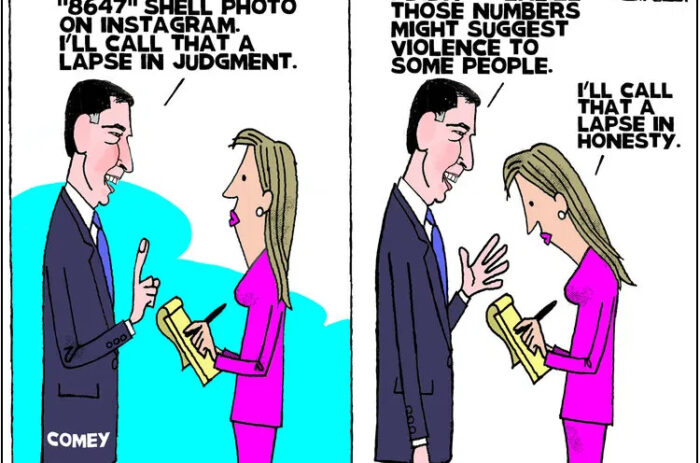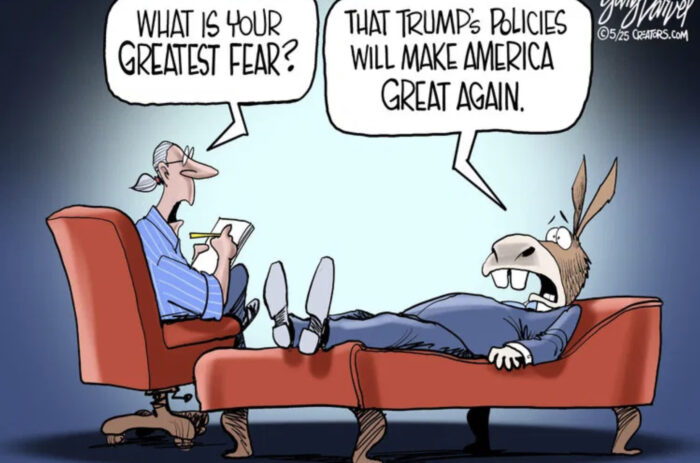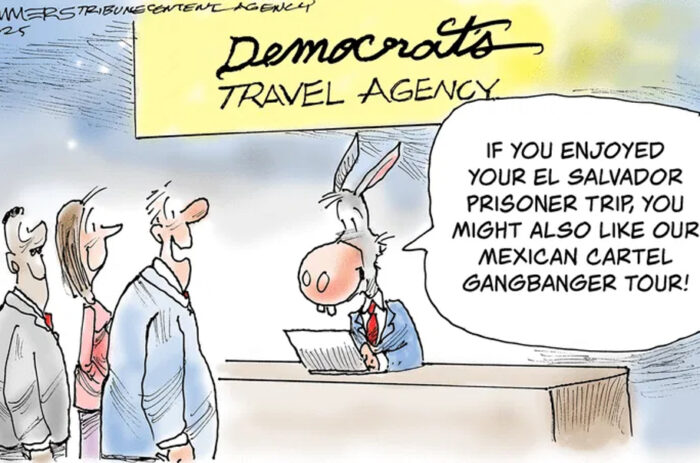print Print Cartoon
Questions
1. Define facetious.
2. Editorial cartoonists often use humor to make light of serious situations. Which comic device does the cartoonist use to take a facetious approach to the necessity of social distancing?
a) caricature
b) parody
c) understatement
d) onomatopoeia
e) anthropomorphism
Scroll down to the bottom of the page for the answers.

Cartoon by Stephan Pastis
Answers
1. Facetious: not serious about a serious subject, in an attempt to be funny or to appear clever (dictionary.cambridge .org); meant to be humorous or funny: not serious (merriam-webster .com)
2. e) anthropomorphism, which is a type of personification that gives human characteristics to non-humans or objects especially animals
The cartoonist did not use:
a) caricature: A description or characterization that exaggerates or distorts a character’s prominent features, usually for purposes of mockery. For example, a cartoon of a gaunt Abraham Lincoln with a giant top hat, a very scraggly beard, and sunken eyes could be considered a caricature.
b) parody: a humorous or satirical imitation of a serious piece of literature or writing; a work in which the style of an author or work is closely imitated for comic effect or in ridicule
c) understatement: a figure of speech in which statements are purposely understated. It may be used to indicate the speaker’s nonchalance (or obliviousness) regarding an often important or otherwise remarkable situation. It often results in irony where, for instance, the speaker’s response to an event does not match how the viewer expects the speaker to react.
d) onomatopoeia: a word that imitates or suggests the source of the sound that it describes. Common occurrences of onomatopoeias include animal noises, such as “oink” or “meow” or “roar” or “chirp.”



